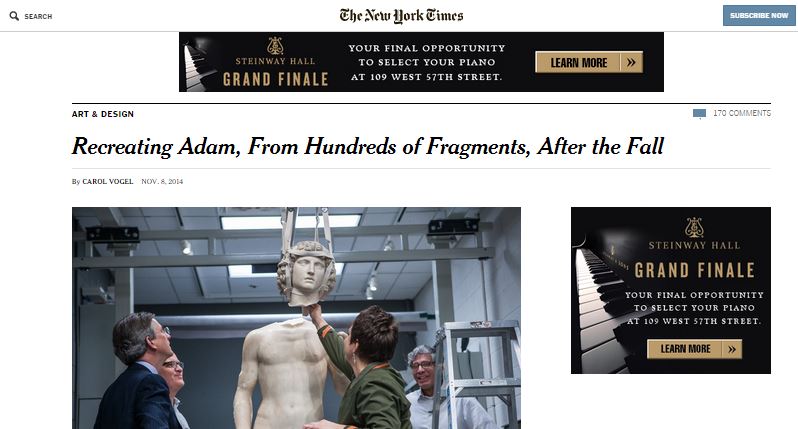Auction previews happen all the time in New York City, but who goes? Well intrepid collectors, obviously, looking for their next big purchase and art world insiders. At any time the top auction houses: Sotheby’s, Christie’s, Phillip’s and Bonham’s, have a rotation of artwork, furniture or jewelry (just to name a few) on view. What is not widely known is that these previews are open free to the public. What is so exciting about this is that much of what is on view will go from private collections back into private collections. For some of these artworks and objects this is the only time they will be viewed by the public.
Not to mention, if you are a jewelry lover like me and want to try on $100,000+ rings, necklaces and earrings this is your chance! All one has to do is walk in and ask what floor the preview is and then you are good to go. But this is not the only reason you should go to a preview. Much like a museum or gallery these exhibitions are often curated and will offer a different perspective on the work at hand. An upcoming auction at Sotheby’s, The New York Sale, looks like a good prospect. According to Sotheby’s this is a curated auction of “items from, inspired by and celebrating New York City.” This inaugural New York Sale includes Print, Photographs, Paintings, Sculpture, Silver, Books, Jewelry and iconic New York Memorabilia.
Auctions are often themed and scheduled to coincide with other events in New York. Right now Bonhams has an exhibition called Dogs in Show and Field for an auction featuring only canine focused fine art, a perfect match for the annual Westminster Kennel Club Dog Show, also in New York. The auction is happening tomorrow February 18th in New York beginning at 10am, so don’t worry dog lovers you still have time to hit both events.
Seeing auction previews and the auctions themselves is a great way to get a feel for what’s in the market at the moment, the prices and conditions of what is available. Plus, it can be a great way to spend an afternoon.
Here are some interesting auction previews and exhibitions that are coming up:
· Rockefeller Center and the Rise of Modernism in the Metropolis, Christie’s Private Selling Exhibition, New York
- On view: 17 January – 25 February 2015
· Dogs in Show and Field, Bonham’s New York
- On view: Today, February 17th 10AM-6PM
- Auction: February 18th 10AM
· Under the Influence, Phillips New York
- 23 February – 3 March, 10am-6pm (Sundays 12pm-6pm)
- Auction: March 4th 11am
· The New York Sale, Sotheby’s New York
- On view: 26 March - 31 March, 10AM - 01PM
- Auction: April 1st, 7PM







































